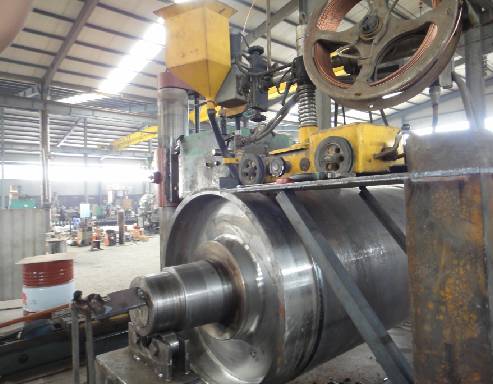 Afrikaans
Afrikaans  Albanian
Albanian  Amharic
Amharic  Arabic
Arabic  Armenian
Armenian  Azerbaijani
Azerbaijani  Basque
Basque  Belarusian
Belarusian  Bengali
Bengali  Bosnian
Bosnian  Bulgarian
Bulgarian  Catalan
Catalan  Cebuano
Cebuano  Corsican
Corsican  Croatian
Croatian  Czech
Czech  Danish
Danish  Dutch
Dutch  English
English  Esperanto
Esperanto  Estonian
Estonian  Finnish
Finnish  French
French  Frisian
Frisian  Galician
Galician  Georgian
Georgian  German
German  Greek
Greek  Gujarati
Gujarati  Haitian Creole
Haitian Creole  hausa
hausa  hawaiian
hawaiian  Hebrew
Hebrew  Hindi
Hindi  Miao
Miao  Hungarian
Hungarian  Icelandic
Icelandic  igbo
igbo  Indonesian
Indonesian  irish
irish  Italian
Italian  Japanese
Japanese  Javanese
Javanese  Kannada
Kannada  kazakh
kazakh  Khmer
Khmer  Rwandese
Rwandese  Korean
Korean  Kurdish
Kurdish  Kyrgyz
Kyrgyz  Lao
Lao  Latin
Latin  Latvian
Latvian  Lithuanian
Lithuanian  Luxembourgish
Luxembourgish  Macedonian
Macedonian  Malgashi
Malgashi  Malay
Malay  Malayalam
Malayalam  Maltese
Maltese  Maori
Maori  Marathi
Marathi  Mongolian
Mongolian  Myanmar
Myanmar  Nepali
Nepali  Norwegian
Norwegian  Norwegian
Norwegian  Occitan
Occitan  Pashto
Pashto  Persian
Persian  Polish
Polish  Portuguese
Portuguese  Punjabi
Punjabi  Romanian
Romanian  Russian
Russian  Samoan
Samoan  Scottish Gaelic
Scottish Gaelic  Serbian
Serbian  Sesotho
Sesotho  Shona
Shona  Sindhi
Sindhi  Sinhala
Sinhala  Slovak
Slovak  Slovenian
Slovenian  Somali
Somali  Spanish
Spanish  Sundanese
Sundanese  Swahili
Swahili  Swedish
Swedish  Tagalog
Tagalog  Tajik
Tajik  Tamil
Tamil  Tatar
Tatar  Telugu
Telugu  Thai
Thai  Turkish
Turkish  Turkmen
Turkmen  Ukrainian
Ukrainian  Urdu
Urdu  Uighur
Uighur  Uzbek
Uzbek  Vietnamese
Vietnamese  Welsh
Welsh  Bantu
Bantu  Yiddish
Yiddish  Yoruba
Yoruba  Zulu
Zulu conveyor roller pulley
Understanding Conveyor Roller Pulleys Key Components for Material Handling
In the realm of material handling and logistics, efficiency is paramount. One of the unsung heroes of this industry is the conveyor system, which utilizes various components to facilitate the smooth movement of goods. Among these components, conveyor roller pulleys play a critical role in ensuring the effectiveness and reliability of the entire system. This article delves into the importance of conveyor roller pulleys, their functions, types, and best practices for maintenance.
What are Conveyor Roller Pulleys?
Conveyor roller pulleys, also known as conveyor pulleys, are cylindrical devices that serve as an integral part of a conveyor system. They are typically mounted on a shaft and are crucial for guiding and supporting the conveyor belt. These pulleys can be located at both the drive and tail ends of the conveyor, facilitating the belt's movement and ensuring consistent tension, which is vital for optimal functioning.
Functions of Conveyor Roller Pulleys
The primary function of conveyor roller pulleys is to facilitate the movement of the conveyor belt. However, their role extends beyond merely assisting in belt motion. Pulleys help in maintaining belt tension, which is essential for preventing slippage or misalignment. They also assist in redirecting the conveyor belt around bends and corners while supporting the belt's weight, ultimately contributing to the overall efficiency of the material handling process.
Beyond their mechanical functions, roller pulleys can also impact the lifespan of the conveyor system. Properly designed and maintained pulleys minimize wear and tear on the conveyor belt, extending its operational lifespan and reducing maintenance costs.
Types of Conveyor Roller Pulleys
There are several types of conveyor roller pulleys, each designed with specific functionalities in mind. The most common types include
1. Drive Pulleys Located at the running end of the conveyor, drive pulleys are responsible for powering the belt. They are typically connected to a motor that rotates the pulley, thereby moving the belt.
conveyor roller pulley

2. Return Pulleys Found at the tail end of the conveyor, return pulleys support the return side of the belt as it travels back to the drive pulley. They help to guide the belt and maintain its alignment.
3. Snub Pulleys These are used to create additional friction and assist in improving the grip of the conveyor belt on the drive pulley. Snub pulleys can enhance the efficiency of the belt drive.
4. Tail Pulleys Located at the end of the conveyor, tail pulleys help in returning the empty belt and providing a surface for it to gather.
5. Human-Touch Pulleys Designed for applications where human interaction is required, these pulleys assist in moving products to workstation areas or assembly lines.
Maintenance Best Practices
Proper maintenance of conveyor roller pulleys is crucial for ensuring a long operational life. Key practices include
- Regular Inspections Conduct routine checks for wear and tear, misalignment, and other potential issues. - Lubrication Keep the pulleys lubricated to reduce friction and wear. - Alignment Checks Ensure that pulleys are properly aligned to prevent undue stress on the belt. - Cleaning Remove debris and materials that could impair the functionality and safety of the conveyor.
Conclusion
In conclusion, conveyor roller pulleys are vital components of any efficient material handling system. Their role in facilitating the movement of conveyor belts cannot be overstated, and understanding their functions, types, and maintenance practices is essential for anyone involved in the logistics and manufacturing sectors. By prioritizing the care and upkeep of these pulleys, businesses can maximize their operational efficiency, reduce downtime, and ultimately boost productivity.
-
Revolutionizing Conveyor Reliability with Advanced Rubber Lagging PulleysNewsJul.22,2025
-
Powering Precision and Durability with Expert Manufacturers of Conveyor ComponentsNewsJul.22,2025
-
Optimizing Conveyor Systems with Advanced Conveyor AccessoriesNewsJul.22,2025
-
Maximize Conveyor Efficiency with Quality Conveyor Idler PulleysNewsJul.22,2025
-
Future-Proof Your Conveyor System with High-Performance Polyurethane RollerNewsJul.22,2025
-
Driving Efficiency Forward with Quality Idlers and RollersNewsJul.22,2025





























